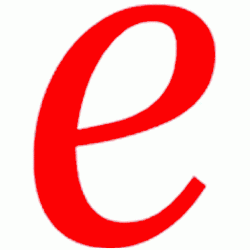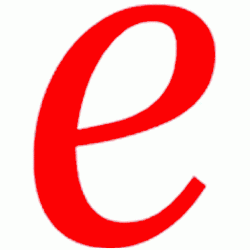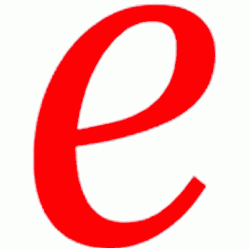Key points:
In one of my graduate courses for future PK-12 educational leaders, students are asked to review a student handbook and provide their recommendations on how to improve those handbooks. Though the students provide specific recommendations for changes to student policies or additions to improve the teaching and learning process, recently, many of the recommendations raised by students are more related to how materials are presented. Sometimes these aspiring leaders are befuddled to learn about rules they have supposedly been working under for several school years. They are amazed that the rules outlined in the handbook are not enforced or potentially were simply unknown to them as staff members.
For the past decade or so, transparency has been a watchword for good governance at all levels. Archon Fung and Stephen Kosack reviewed the state of governance transparency and noted that the research literature on transparency programs “has thus far yielded frustratingly mixed conclusions: some studies conclude that transparency has huge effects; others show little or no effect.”
So, it appears that transparency is not enough. Providing access to the materials of government, policy documents, mission statements, DEI statements, etc. is not enough. The materials must be accessible to the public and other stakeholders. Accessible, however, does not simply mean being provided. They need to be curated in a way to make them easy to access and proactively shared with stakeholders in ways that they will be able to understand them when necessary. Stakeholders need to be aware of the policies, goals, missions, etc. That level of transparency requires three primary things: context, the use of vernacular and understandable language in an accessible format, and routine use.
First, materials shared with any group of stakeholders need to be put in context before they are useful for more stakeholders. Schools (and most institutions) are complicated multifaceted organizations. Internal stakeholders often take much for granted and make assumptions when developing policy manuals, mission statements, and procedures for the standard operating of the organization. A couple of methods can be helpful here. One would be to include an intent statement on policies or similar documents that explain the governance intent for the policy. Often, that is left up to the individual stakeholder to interpret. Such context statements would assist stakeholders, particularly those without experience reading and interpreting such documents, with a better understanding of the organization’s goals. When it is a form to complete, providing step-by-step instructions, completed examples, and contact information on who to contact for assistance is necessary. Nearly every educator has experienced the frustration of having a form returned for some minor error in completing a form–usually without a specific set of directions on how to fix the situation. Recently, one colleague related having to exchange a half-dozen emails over a $1.75 overage on an expense report. That is an exceptionally poor use of institutional resources. Clear user-friendly directions can reduce such situations.
We are regularly told to avoid jargon and put materials into accessible language. Several students commented about the overuse of jargon in handbooks presented for students and their parents for their use. Beyond removing jargon, consider a glossary for handbooks with links within the policy to appropriate links for the terms in question. Ensure that materials are translated into the first language of parents and other stakeholders. Do not rely simply on automatic translators but find actual interpreters to ensure that the spirit of the documents is properly translated. As an aside, poets make excellent translators.
Beyond removing jargon and ensuring that the language used is not a hinderance to access, materials provided to users need to be fully accessible. For digital documents, ensure that they are compliant with web accessibility guidelines. As more than a quarter of Americans have some type of disability, for full enfranchisement, documents must be fully accessible. Accessibility goes beyond text size. Consider providing documents in various formats, such as audio versions for visually impaired individuals or summaries for those needing a quick overview.
Once the documents have been put in context and made fully accessible, it is important to ensure that they are proactively shared with stakeholders. As one student wrote, what good is a mission statement if long-term employees are unaware of it? When onboarding, don’t just hand out a hefty set of handbooks and other materials. Instead, dedicate time for walking new staff through key sections, explaining the “why” behind policies and procedures. This personalizes the information and fosters understanding. For complex documents like safety manuals, research protocols, or financial forms, consider targeted training sessions. This allows for deeper dives, interactive learning, and space for questions. By proactively sharing documents in a user-friendly way, you empower learners at all levels to grasp the information effectively.
Useful and effective transparency requires a shift from simply providing information to actively ensuring its comprehension and usability. By incorporating context, clear language, and accessible formats, alongside proactive sharing strategies, we can bridge the gap between policy documents and the stakeholders they impact. This empowers educators, students, and families to navigate the complexities of a school environment, fostering a sense of shared responsibility and ultimately, a more successful educational environment for all.
- SEO Powered Content & PR Distribution. Get Amplified Today.
- PlatoData.Network Vertical Generative Ai. Empower Yourself. Access Here.
- PlatoAiStream. Web3 Intelligence. Knowledge Amplified. Access Here.
- PlatoESG. Carbon, CleanTech, Energy, Environment, Solar, Waste Management. Access Here.
- PlatoHealth. Biotech and Clinical Trials Intelligence. Access Here.
- Source: https://www.eschoolnews.com/educational-leadership/2024/05/06/moving-beyond-transparency-to-accessibility-and-awareness/
- :has
- :is
- :not
- :where
- $UP
- 1
- 10
- 12
- 13
- 250
- 28
- 42
- 7
- 75
- a
- Able
- About
- access
- accessibility
- accessible
- actively
- actual
- additions
- administrators
- advanced
- affiliates
- All
- allows
- alongside
- also
- amazed
- American
- Americans
- an
- and
- any
- appears
- appropriate
- ARE
- areas
- AS
- aside
- asked
- aspects
- aspiring
- assist
- Assistance
- Association
- assumptions
- At
- audio
- author
- Automatic
- avoid
- aware
- awareness
- BE
- been
- before
- behind
- being
- Better
- between
- Beyond
- Books
- BRIDGE
- Building
- but
- by
- CAN
- certificate
- Changes
- chicago
- clear
- colleague
- commented
- Communications
- complete
- Completed
- completing
- complex
- complexities
- compliant
- complicated
- conclude
- Conclusions
- Consider
- consortium
- consultant
- contact
- context
- Council
- Couple
- courses
- curated
- Curriculum
- decade
- dedicate
- deeper
- dei
- Department
- description
- Design
- developing
- Development
- digital
- digital documents
- directions
- Disability
- discipline
- Diversity
- do
- documents
- does
- Dont
- Early
- earned
- easy
- ed
- Editorial
- Education
- educational
- educators
- effect
- Effective
- effectively
- effects
- efforts
- emails
- emotional
- employees
- empower
- empowers
- enforced
- engagement
- enough
- ensure
- ensuring
- Environment
- equity
- error
- etc
- Every
- examples
- excellent
- exceptionally
- exchange
- expense
- experience
- experienced
- Explain
- explaining
- facilities
- families
- far
- financial
- Find
- First
- Fix
- Focus
- For
- form
- format
- formats
- forms
- fostering
- fosters
- from
- frustratingly
- frustration
- full
- fully
- future
- gap
- Goals
- Goes
- good
- governance
- Government
- graduate
- granted
- grasp
- Group
- hand
- harvard
- Have
- having
- he
- Health
- hefty
- Held
- helpful
- here
- higher
- Higher education
- historical
- history
- holds
- How
- How To
- However
- http
- HTTPS
- huge
- if
- illinois
- Impact
- implementations
- important
- improve
- in
- include
- incorporating
- Indiana
- individual
- individuals
- information
- instead
- Institutional
- institutions
- instructional
- instructions
- intent
- interactive
- interests
- internal
- International
- interpret
- interpreting
- into
- Iowa
- issues
- IT
- ITS
- jargon
- joining
- jpg
- just
- Key
- language
- leaders
- Leadership
- LEARN
- learners
- learning
- Led
- left
- Level
- levels
- Library
- like
- links
- literature
- little
- long-term
- made
- make
- many
- materials
- mean
- member
- Members
- memberships
- methods
- minor
- Mission
- Mission Statement
- missions
- mixed
- more
- most
- moving
- much
- multifaceted
- must
- my
- National
- Navigate
- nearly
- necessary
- Need
- needing
- networking
- New
- no
- note
- noted
- of
- often
- on
- Onboarding
- ONE
- online
- operating
- or
- organization
- organizations
- Other
- Others
- out
- outlined
- over
- overview
- parents
- particularly
- past
- photo
- plato
- Plato Data Intelligence
- PlatoData
- points
- policies
- policy
- poor
- Posts
- potentially
- presented
- primary
- principals
- Prior
- Proactive
- proactively
- procedures
- process
- Program
- Programs
- properly
- protocols
- provide
- provided
- providing
- public
- put
- Quarter
- question
- Questions
- Quick
- raised
- Reading
- recently
- recommendations
- reduce
- regularly
- related
- rely
- removing
- report
- requires
- research
- Resources
- responsibility
- review
- reviewed
- routine
- rules
- Safety
- School
- Schools
- secondary
- sections
- sense
- served
- sessions
- set
- several
- shared
- sharing
- shift
- show
- similar
- simply
- situation
- situations
- Size
- So
- some
- sometimes
- Space
- specific
- spent
- spirit
- Staff
- stakeholder
- stakeholders
- standard
- State
- Statement
- statements
- Stephen
- Steve
- steven
- strategies
- Student
- Students
- studies
- successful
- such
- supervision
- system
- Systems
- Take
- targeted
- Teaching
- team
- Technology
- terms
- text
- than
- that
- The
- the information
- The State
- their
- Them
- These
- they
- things
- this
- those
- though?
- three
- Through
- Thus
- time
- to
- told
- Topics
- Training
- translated
- Transparency
- two
- type
- Ultimately
- unaware
- under
- understand
- understandable
- understanding
- university
- unknown
- URL
- usability
- use
- used
- useful
- user-friendly
- users
- variety
- various
- versions
- visually
- W3
- walking
- Way..
- ways
- we
- were
- What
- when
- while
- WHO
- will
- Wisconsin
- with
- within
- without
- working
- would
- written
- wrote
- years
- yielded
- you
- zephyrnet













